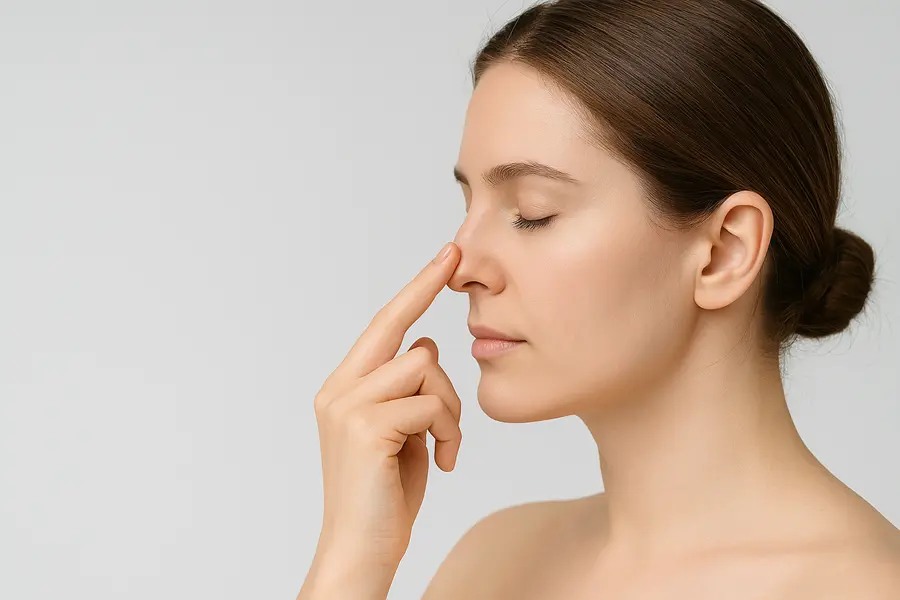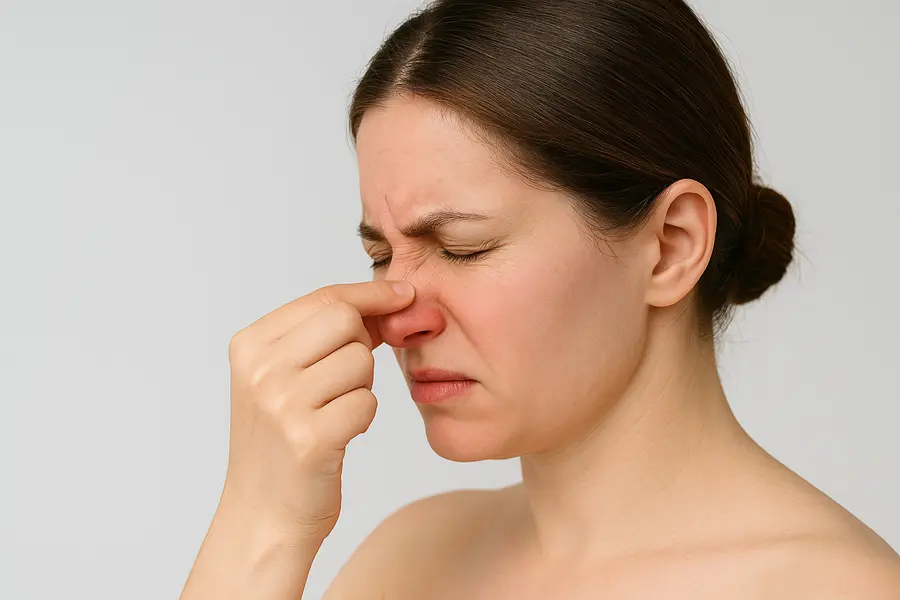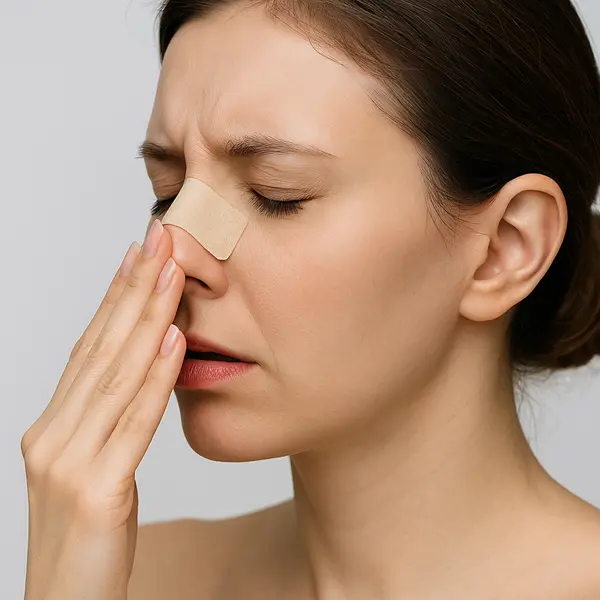Will Rhinoplasty Affect My Breathing If you're considering nose surgery, one of your biggest concerns might be how rhinoplasty could impact your ability to breathe.
If you're considering nose surgery, one of your biggest concerns might be how rhinoplasty could impact your ability to breathe. This is a completely valid worry, and understanding the relationship between rhinoplasty and breathing is crucial before making your decision.
The good news? When performed by a skilled surgeon, rhinoplasty can actually improve your breathing while achieving your desired cosmetic results. However, there are important factors to consider to ensure the best possible outcome for both form and function.
Rhinoplasty, commonly known as a “nose job,” is a surgical procedure that reshapes the nose for cosmetic or functional reasons. During this surgery, your surgeon may modify the bone, cartilage, and soft tissues of your nose to create a more balanced appearance or improve breathing function.
There are two main types of rhinoplasty:
● Cosmetic rhinoplasty: Focuses primarily on improving the nose’s appearance
● Functional rhinoplasty: Addresses structural issues that affect breathing, such as a deviated septum
Many patients benefit from a combination approach that addresses both aesthetic concerns and breathing problems simultaneously.
For many patients, nose surgery actually enhances their breathing capacity. Here's how:
Correcting Structural Issues: Rhinoplasty can fix problems like a deviated septum, enlarged turbinates, or collapsed nasal valves that restrict airflow. When these issues are addressed during surgery, patients often experience significantly improved breathing.
Opening Nasal Passages: By reshaping certain areas of the nose, surgeons can create wider nasal passages, allowing air to flow more freely. This is particularly beneficial for people who have struggled with chronic nasal congestion.
Addressing Birth Defects: Some individuals are born with structural abnormalities that affect breathing. Rhinoplasty can correct these issues, providing relief that patients may never have experienced before.


While most patients maintain or improve their breathing after rhinoplasty, some may experience temporary or, in rare cases, permanent changes:
Temporary Swelling: All patients experience swelling after nose surgery, which can temporarily affect breathing for several weeks or months. This is completely normal and resolves as healing progresses.
Overcorrection: In some cases, too much tissue or cartilage may be removed, potentially narrowing the nasal passages and making breathing more difficult.
Scar Tissue Formation: Although uncommon, excessive scar tissue can sometimes form during healing, which may obstruct airflow.
Understanding why some patients experience breathing difficulties after rhinoplasty can help you make informed decisions and set realistic expectations.
Swelling and Inflammation: For the first few months after surgery, swelling inside your nose is completely normal. This internal swelling isn’t always visible from the outside but can significantly impact breathing during recovery.
Nasal Dryness: Your nose may feel dry and congested as it heals, which can affect your perception of breathing quality.
Temporary Changes in Airflow: As your nose adjusts to its new shape, you may notice changes in how air flows through your nasal passages.
Aggressive Tissue Removal: Removing too much cartilage or bone can compromise the structural support needed for proper breathing.
Inadequate Functional Assessment: If a surgeon focuses solely on cosmetic changes without considering the nose’s functional aspects, breathing problems may result.
Poor Healing: In rare cases, complications during the healing process can lead to breathing issues.

Allergies: Patients with allergies may experience more pronounced breathing difficulties during recovery.
Chronic Sinusitis: Pre-existing sinus issues can complicate recovery and affect breathing after rhinoplasty.
The key to maintaining good breathing after rhinoplasty lies in selecting a qualified surgeon who understands both the aesthetic and functional aspects of nose surgery.
Board Certification: Choose a surgeon certified by the American Board of Plastic Surgery or the American Board of Facial Plastic and Reconstructive Surgery.
Specialization Experience: Look for surgeons who regularly perform rhinoplasty and have extensive experience with both cosmetic and functional nose surgery.
Comprehensive Evaluation: Your surgeon should thoroughly assess your nasal structure, breathing patterns, and overall health before surgery.
During your consultation, don’t hesitate to ask:
● How will you preserve or improve my breathing during rhinoplasty?
● What techniques do you use to maintain nasal function?
● How many rhinoplasty procedures do you perform each year?
● Can I speak with previous patients about their breathing after rhinoplasty?
● What happens if I experience breathing problems after surgery?
Be completely honest about your breathing concerns and goals. If you have any history of breathing difficulties, allergies, or nasal congestion, make sure your surgeon knows. This information is crucial for planning a surgery that will give you the best possible results.
Address Existing Issues: Treat any sinus infections, allergies, or other nasal problems before your procedure.
Follow Pre-operative Instructions: Your surgeon may recommend stopping certain medications or using nasal sprays to optimize your nasal health.
Realistic Expectations: Understand that some temporary breathing changes are normal during recovery.
Follow Post-operative Care: Use prescribed nasal sprays, rinses, or medications exactly as directed.
Be Patient: Remember that breathing after rhinoplasty typically improves gradually over several months.
Stay in Contact: Keep all follow-up appointments and communicate any concerns about your breathing to your surgical team.
Understanding the typical recovery process can help ease concerns about breathing after rhinoplasty:
Week 1-2: Significant swelling and congestion are normal. Breathing through your mouth may be necessary.
Month 1-3: Swelling begins to subside, and breathing gradually improves. You may still notice some congestion.
Month 3-6: Most internal swelling resolves, and breathing typically returns to normal or better than before surgery.
Month 6-12: Final results become apparent, including optimal breathing function.
While some breathing changes are expected after rhinoplasty, contact your surgeon if you experience:
● Severe or worsening breathing difficulties after the initial recovery period
● Complete inability to breathe through one or both nostrils
● Signs of infection, such as fever or unusual discharge
● Persistent pain or unusual symptoms
The relationship between rhinoplasty and breathing doesn’t have to be an either-or situation. When performed by an experienced surgeon who understands nasal anatomy and function, nose surgery can enhance both your appearance and breathing capacity.
The key is choosing a qualified surgeon who takes a comprehensive approach to rhinoplasty, considering both your aesthetic goals and functional needs. By understanding the potential impacts on breathing and taking steps to minimize risks, you can feel confident about your decision to pursue rhinoplasty.
Remember that temporary breathing changes during recovery are normal, and most patients find that their breathing after rhinoplasty is either the same as or better than it was before surgery. With proper planning, realistic expectations, and excellent surgical care, you can achieve the nose you’ve always wanted while maintaining or even improving your ability to breathe comfortably.
If you’re considering rhinoplasty, schedule consultations with board-certified surgeons who can evaluate your specific situation and discuss how to achieve your goals while preserving optimal nasal function. Your breathing is too important to compromise, but with the right approach, you won’t have to choose between looking good and breathing well.
Areas of Expertise

"Rhinoplasty offers an aesthetic and functional appearance by providing facial harmony."
"Rhinoplasty offers an aesthetic and functional appearance by providing facial harmony."
Detailed Info"Sinusitis is a painful condition caused by inflammation of the sinuses around the nose."
"Sinusitis is a painful condition caused by inflammation of the sinuses around the nose."
Detailed Info"Tonsil diseases are conditions that cause infection and swelling in the throat."
"Tonsil diseases are conditions that cause infection and swelling in the throat."
Detailed Info"Adenoids in children are enlarged lymphoid tissue that can cause nasal congestion."
"Adenoids in children are enlarged lymphoid tissue that can cause nasal congestion."
Detailed Info"Botulinum Toxin provides a youthful and smooth appearance on the face by reducing wrinkles."
"Botulinum Toxin provides a youthful and smooth appearance on the face by reducing wrinkles."
Detailed Info"In children, otitis media can cause earache and hearing problems."
"Facial rejuvenation with non-surgical methods reduces wrinkles and revitalizes the skin."
"Facial rejuvenation with non-surgical methods reduces wrinkles and revitalizes the skin."
Detailed Info"Sleep apnea is a disorder that causes breathing pauses during sleep."
At Dr. Osman Halit Çam’s clinic, we offer internationally recognized, patient-centered care with cutting-edge techniques in modern rhinoplasty and facial aesthetics.
From consultation to recovery, our mission is to provide personalized treatment in a safe, comfortable, and world-class medical environment.
Health innovations, treatment processes, and the latest news about our clinic are shared here.
A Comprehensive Guide to Rhinoplasty Correction Nose Job for Crooked Nose Nose job for crooked nose correction, understanding the procedure, benefits, and what to expect can help you make an informed decision about this transformative treatment. Get Info Nose job for crooked nose A crooked nose can significantly impact both your appearance and quality of […]
Your Complete Guide to Rhinoplasty and Piercings Can I Get a Nose Job with Nose Piercing Can I get nose job with nose piercing? This is one of the most common questions patients ask when planning their cosmetic surgery journey. Get Info Can I Get a Nose Job with Nose Piercing? If you’re considering rhinoplasty […]
What Older Adults Need to Know About Nose Surgery Rhinoplasty When You Get Old Rhinoplasty when you get old presents unique considerations that differ significantly from procedures performed on younger patients. Get Info What Older Adults Need to Know About Nose Surgery Rhinoplasty when you get old presents unique considerations that differ significantly from procedures […]
Each of the contents on this site has been prepared for informational purposes. Do not apply any of the treatment methods described on the site without the supervision of a doctor. Otherwise, the site management and Assoc. Prof. will not be responsible in any way for any problems that may arise. Dr. Osman Halit Çam is not responsible.
© 2023 – All Rights Reserved. Assoc. Dr. Osman Halit Cam
Last Updated: 25.07.2025